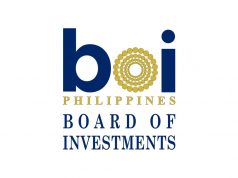PHL bond market grows in Q2
THE Philippine bond market continued to expand in the second quarter even as yields surged as a result of successive rate hikes by the central bank, the Asian Development Bank (ADB) said.
In its latest Asia Bond Monitor report, the multilateral lender said the local currency bond market grew 2.6% quarter-on-quarter in June, faster than the 2.1% increase during the first three months of 2018.
Outstanding peso-denominated debt totalled $108 billion (P5.741 trillion) as of end-June, three percent higher from the $102 billion tally during the same quarter in 2017. Broken down, nearly 80% of the amount were state borrowings worth $86 billion, while corporate borrowings reached $22 billion.
Government debt grew by 2.5% from the previous quarter on account of its latest issuance of retail Treasury bonds, which shored up P121.8 billion worth of fresh funds. This helped offset several “failed auctions” for government-issued securities during the quarter, which came as the Treasury opted to reject offers as yields sought by players were higher than what it was willing to accept.
“The Philippines’ total bond issuance grew 43.1% q-o-q in Q2 2018, recording the fastest growth rate among emerging East Asian economies next to the PRC,” the ADB said. “The increase largely came from the issuance of Retail Treasury Bonds in June amounting to $2.3 billion.”
Fundraising by private firms also went up from the previous quarter albeit at a slower pace, with new corporate bond issuances booking a 3.2% increase. The ADB said this was due to “rising borrowing costs” following two rate hikes introduced by the Bangko Sentral ng Pilipinas in May and June, which brought benchmark rates 50 basis points higher.
“Uncertainties weighed heavily on investor decisions, resulting in a preference for short-dated Treasury bills, particularly the 3-month tenor, as investors chose caution while awaiting the outcomes of domestic and international events,” the ADB said in the report. “The higher yields also point to the risks that investors see in the long-term.”
In particular, bond buyers worried about “high inflation and slowing economic growth” in the domestic front, while concerns on rising oil prices and a trade war between the United States and China also dampened investor appetite.
Inflation stood beyond four percent during the quarter, while growth slowed to six percent coming from a 6.6% pace during the January-March period.
The Philippines remained as the second-smallest bond market across emerging East Asia next to Vietnam’s $51-billion debt burden. In contrast, the biggest issuers as of June are China ($9.026 trillion), South Korea ($1.993 trillion), and Thailand ($362 billion).
Peso bonds also took a modest share relative to the economy, ADB data showed. The local currency bond market took a 34.7% share of gross domestic product, versus Korea’s 126.2%, Malaysia’s 98.4%, and Singapore’s 83.8%. — Melissa Luz T. Lopez



